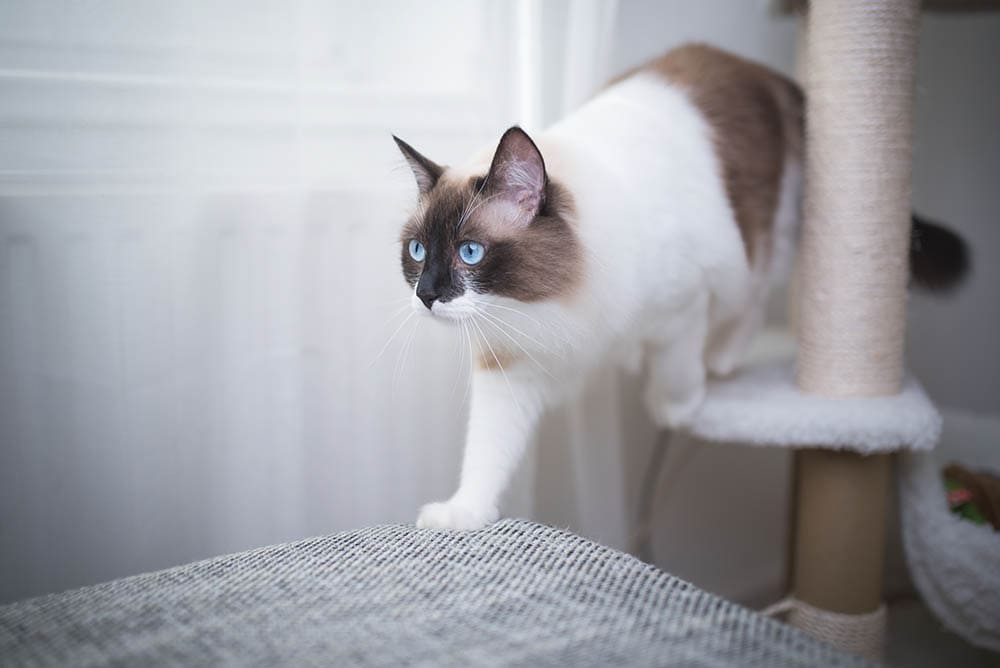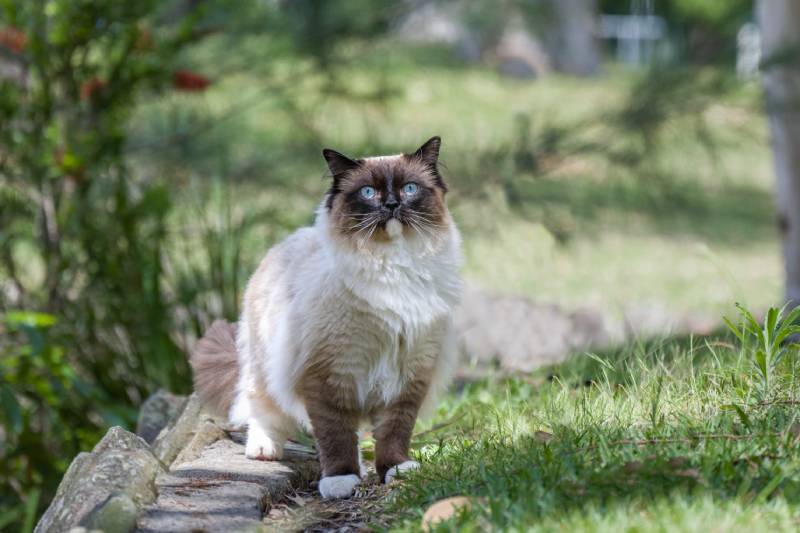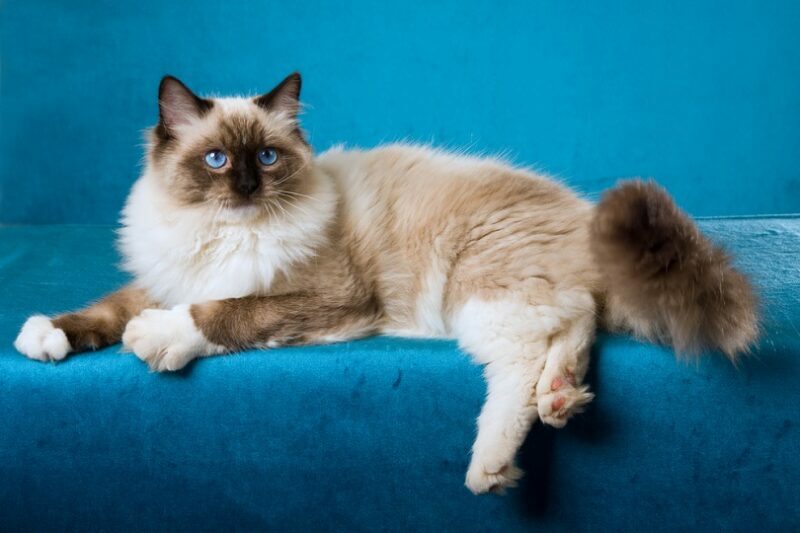Ragdolls are beautiful and affectionate and sometimes act more like dogs than cats. These large kitties are known as “gentle giants,” are generally good with children, and adore their humans. They love to be held and are known to go “limp” when picked up, hence the name, “Ragdoll.”
But why do Ragdoll cats go limp? It’s believed that Ragdolls go limp because it reminds them of being kittens. Read on to learn more about this laidback breed!
Why Do Ragdoll Cats Go Limp?
It hasn’t been studied exactly why Ragdoll cats go limp when held, but the most commonly put forward theory is that it reminds them of kittenhood. Mother Ragdolls carry their young around by the scruff of the neck, and the kittens naturally have a reflex or instinct to go limp to make the load easier for their mother. This reflex is usually lost by adolescence for most cat breeds; however, it is thought to be retained in Ragdolls. They tend to “flop” when held, which means they are relaxed.
Not all Ragdolls will go limp when held, however, particularly a timid one. Also, not all Ragdolls enjoy being held. That said, most are social and docile and quite fond of being held by their humans. When you hold this cat, they will usually sprawl out in your arms.
Holding an adult cat by the scruff can result in them stopping moving, but this is a different reflex, a behavioral shutdown that is based on fear and stress. This is why it’s not recommended to scruff adult cats.

Is It a Defense Mechanism?
It seems that Ragdolls go limp because of the natural reflex that they acquire when they are kittens. The “limp” or “floppy” behavior could be a defense mechanism, so to speak, to prevent an accidental injury while being held. Mostly, though, Ragdolls go limp because they are relaxed, and it reminds them of being carted around in the mouth of their mother.
What Is So Special About Ragdoll Cats?
Ragdolls are social, affectionate, and docile and love human companionship. A true Ragdoll will have blue eyes and a soft and fluffy coat. These intelligent cats will engage in a game of fetch with you, much like a dog will. Most are in tune with their owners’ emotions and will comfort them in times of stress or sadness. Their laidback personalities and incredible characteristics make them a coveted cat breed to own.
Are Ragdolls Good Family Pets?
Yes! Ragdolls make excellent family pets. They are extremely tolerant of other cats and dogs, and they love children. They are much more affectionate than many other cat breeds, and they are among the largest domesticated cat breeds around, with a weight reaching 20 pounds. For those dog lovers who would like a cat, the Ragdoll is the breed for you.
Ragdolls are the closest that you’ll get to having a dog in a cat’s body, and they are loyal and loving with their humans. They have a long lifespan, between 15 and 20 years, and due to their lack of an undercoat, they don’t shed as much as most other cat breeds. Interestingly, they are not considered fully grown into adulthood until they’re 4 years old.

Final Thoughts
Owning a Ragdoll is a truly rewarding experience. They are the only cat breed said to “go limp” when you pick them up, and they have a sweet and friendly disposition. They go limp because it reminds them of being carted around in their mother’s mouth as a kitten, and this relaxed position carries on into adulthood. You’ll pay a pretty penny for a true purebred Ragdoll, but their personality is worth the expense.
Featured Image Credit: Linn Currie, Shutterstock











